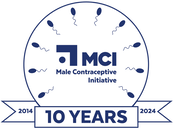|
Simply put, testicles are where sperm come from. And many male contraceptive methods involve preventing the creation of sperm, while others may disrupt sperm function of mature sperm. But how do testicles play their part in the reproductive system? Testicles are the two oval-shaped “balls” on either side of a male’s penis. When a male reaches sexual maturity, the two testicles, also called testes, start to produce and store millions of tiny sperm cells. The testes are oval-shaped and grow to be about 2 inches (5 centimeters) in length and 1 inch (3 centimeters) in diameter. The testicles are also part of the endocrine system. They produce hormones, including testosterone. Testosterone is the hormone that is associated with deeper voices, bigger muscles, and body and facial hair during puberty, and it also stimulates the production of sperm. The testes, together with the epididymis and vas deferens, hang in a pouch-like structure outside the pelvis called the scrotum. This bag of skin helps to regulate the temperature of testicles, which need to be kept cooler than body temperature to produce viable sperm. There is an opportunity to halt production of sperm and prevent conception by changing the temperature of the scrotum. Research published in 2018 found that men who wear tight-fitting underwear (“tighty whiteys”, colloquially) could affect their fertility and reproductive efforts. Scientists are working on other studies in the pipeline to make new methods of male contraception that prevent the testes from making new sperm without using hormones – a promising lead for safe, reversible male contraception. Learn more about male contraceptive methods in the R&D pipeline today. Nuts & Bolts: Testicles To learn more about, please visit our series of posts about male reproduction and contraception: For additional terminology related to male contraception and the male reproductive system, please visit our glossary: For additional publications related to male contraception and the male reproductive system, please visit our publications page:
1 Comment
Hussein Karhani
10/14/2020 04:17:59 pm
I have a child with Down Syndrome Trisomy who recently was found to have undescended testicule and will be sent for a surgery as soon as they call me even that when he was checked up bu the urologist and was ordered to have ultrasound the doctor who recommended the surgery for my child was not sure or certain that the child has undescended or rétractile testicles because when he recommended surgery for the undescended testicles before confirmation 3 or 4 days later my wife and I at home looked at our child testicles while seating on the toilette seat that our child 8 - 9 years testicles were down and we were comfortable because we were stressed out when we heard about undescended testicles and consequences if not treated and same time we read and heard about rétractile testicle we said my wife and I that he might have rétractile testicles instead hopefully I told the urologist about what happened he said that that was good sign and that was making us feeling Comfortable my wife and I thinking and hoping it is rétractile because after we heard about rétractile that it is normal and the doctor told us after referring us to amother specialist for children told us to speak and explain this matter about the child testicles that were down and they after go up that might not be undescended and we hope that because what they say that in case it is undescended that surgery should best be done between 2-6 months or at least before puberty anyways we were worrying that might cause cancer even after corrective surgery then I was told that 1- in 250 people might get cancer only even after corrective surgery
Reply
Your comment will be posted after it is approved.
Leave a Reply. |
Categories
All
Archives
June 2024
|
|
|
Donate to Male Contraceptive InitiativeYour generous donation makes a difference!
|
© Male Contraceptive Initiative. All rights reserved.


 RSS Feed
RSS Feed
